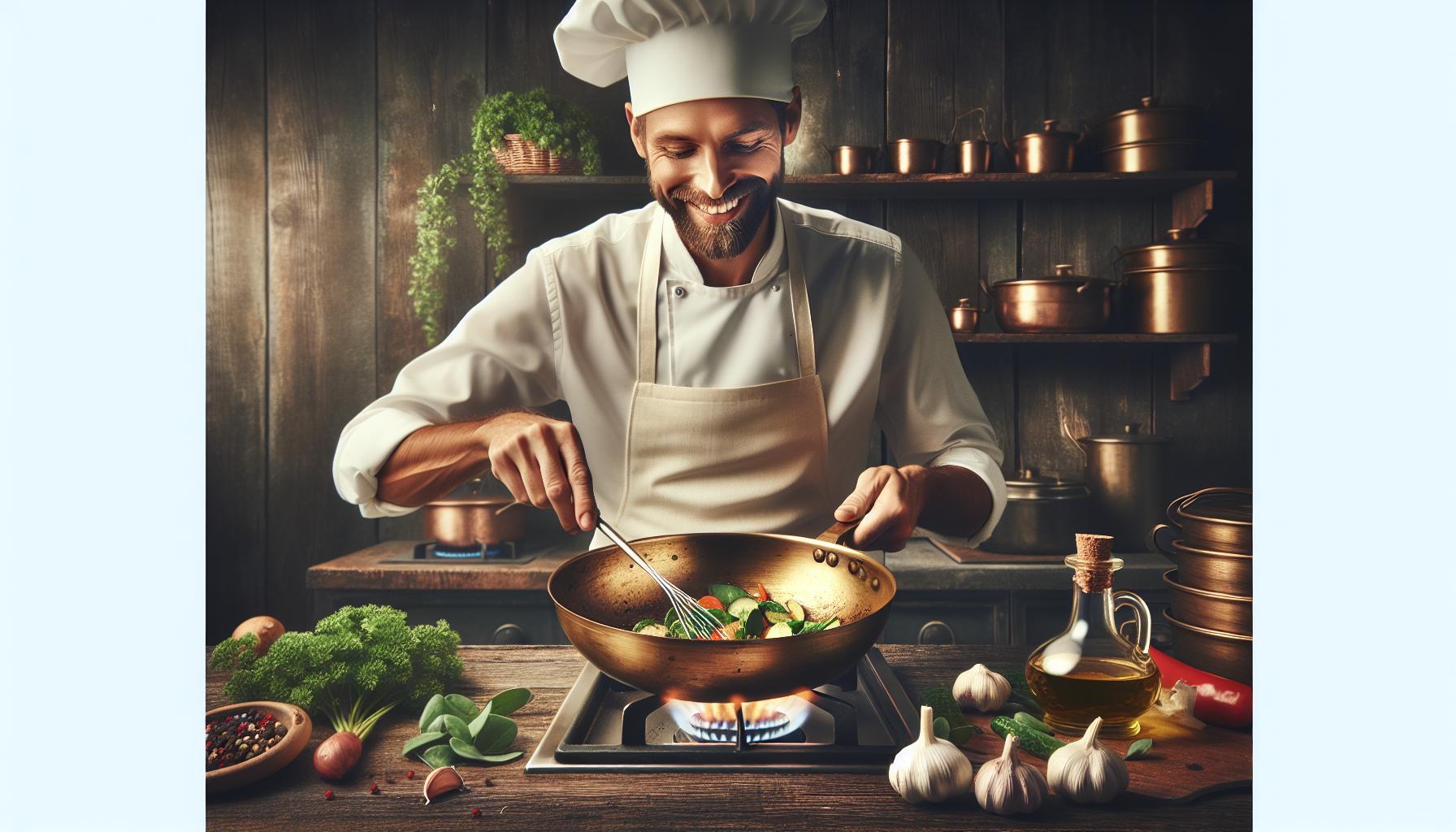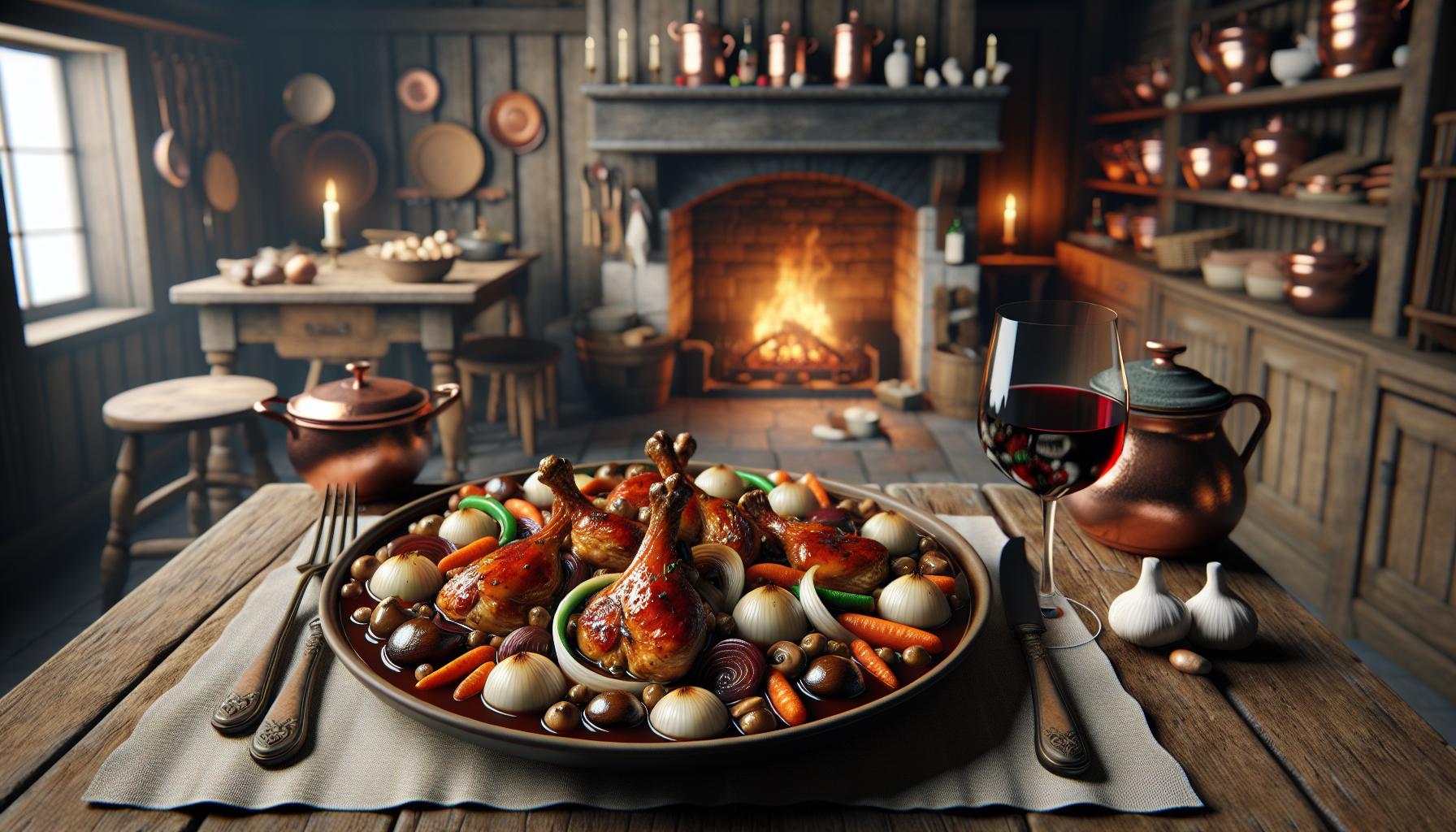French cuisine stands as a towering beacon of culinary excellence, where every dish tells a story of tradition, technique, and timeless sophistication. From the bustling bistros of Paris to the rustic kitchens of Provence, classic French recipes have enchanted food lovers for centuries with their perfect balance of flavors and meticulous attention to detail.
Mastering french cooking classic recipes and techniques isn’t just about following recipes – it’s about embracing fundamental techniques that transform simple ingredients into extraordinary dishes. Whether it’s perfecting a silky béarnaise sauce or achieving the perfect crust on a Coq au Vin, these time-honored methods form the backbone of not just French cuisine but modern cooking worldwide. Let’s dive into the world of French gastronomy where butter reigns supreme and every meal is a celebration of life itself.
French Cooking Classic Recipes and Techniques
French cooking classic recipes and techniques form the backbone of professional culinary arts, establishing precise methods for transforming raw ingredients into refined dishes. These fundamental skills create the foundation for executing classic French recipes with consistency and finesse.
Knife Skills and Cutting Methods
French cuisine demands specific cutting techniques that affect both presentation and cooking consistency. The julienne cut creates matchstick-sized pieces (2-3 inches long, ⅛ inch thick) ideal for vegetables like carrots or celery. Brunoise produces tiny cubes (⅛ inch) perfect for garnishes or aromatic bases. Chiffonade involves rolling leafy herbs or vegetables into tight cylinders before slicing them into delicate ribbons. The batonnet technique yields slightly larger strips (¼ inch thick, 2-3 inches long) commonly used for potato dishes. Each cut serves a distinct purpose: julienne for quick cooking, brunoise for even heat distribution, chiffonade for garnishing soups or salads.
| Mother Sauce | Key Derivatives |
|---|---|
| Béchamel | Mornay, Soubise |
| Hollandaise | Béarnaise, Mousseline |
| Espagnole | Demi-glace, Bordelaise |
| Velouté | Supreme, Allemande |
| Tomato | Provençale, Creole |
Classic French Recipe Foundations

French cuisine relies on precise ingredient combinations and preparation methods that create layers of complex flavors. These foundational elements transform ordinary ingredients into extraordinary dishes through time-tested techniques.
Building Flavor with Mirepoix
Mirepoix forms the aromatic foundation of French cooking, consisting of diced onions, carrots and celery in a 2:1:1 ratio. The classic preparation requires onions cut to 1/4 inch, carrots to 1/3 inch and celery to 1/3 inch pieces. Proper cooking of mirepoix involves sweating the vegetables in butter over low heat for 15-20 minutes until tender but not browned. This process releases essential flavor compounds that create depth in soups, stews and sauces. Common applications include using mirepoix in stocks, braised dishes and classical sauces like sauce espagnole.
Mastering the Perfect Stock
Stock preparation begins with roasting bones at 400°F for 45 minutes to develop rich flavors and color. The three primary French stocks include white stock (fond blanc), brown stock (fond brun) and fish stock (fumet). Each stock requires specific ingredients: veal bones for white stock, roasted beef bones for brown stock and fish bones for fumet. Simmering times vary by type – 4 hours for white stock, 6 hours for brown stock and 30 minutes for fumet. Proper skimming removes impurities while maintaining clear liquid. Regular straining through cheesecloth ensures a clean final product.
Traditional French Cooking Methods

French cuisine employs distinctive cooking techniques that transform raw ingredients into refined dishes. These methods preserve flavors while creating complex taste profiles through controlled heat application.
Braising and Sautéing
Braising combines dry and moist heat cooking to tenderize tough cuts of meat. The process starts with searing meat at high temperatures to create a flavorful crust, followed by slow cooking in liquid at low temperatures. Classic French dishes like Coq au Vin employ braising to achieve tender meat with concentrated flavors.
Sautéing involves cooking ingredients quickly in a small amount of fat over high heat. This technique creates a golden-brown exterior while maintaining moisture inside. French chefs use sautéing for dishes like escalopes de veau, tossing ingredients in a shallow pan with precise wrist movements to ensure even cooking.
Poaching and Confit
Poaching involves cooking ingredients in liquid kept just below the boiling point. The French distinguish between three poaching methods: cold-start poaching for delicate fish, hot-start poaching for eggs, and submersion poaching for fruits. This gentle cooking method preserves the texture of ingredients while infusing them with flavors from the cooking liquid.
Confit, traditionally used for preserving food, involves cooking ingredients slowly in fat at low temperatures. Duck confit exemplifies this technique, where duck legs cook in their own fat for 6-8 hours at 185°F (85°C). The result creates tender meat with concentrated flavors that can be stored for extended periods when properly sealed in fat.
Iconic French Dishes and Their Techniques

Classic French cuisine features signature dishes that showcase masterful cooking techniques. Each iconic recipe demonstrates the harmonious blend of method, timing, and ingredient preparation that defines French gastronomy.
Coq au Vin and Red Wine Reduction
Coq au Vin transforms tough rooster meat into tender morsels through slow braising in red wine. The technique starts with browning lardons (salt pork) to render fat, followed by searing the chicken pieces until golden brown. Pearl onions, mushrooms, carrots glaze separately to maintain their individual textures. The dish’s signature red wine sauce develops through reduction, incorporating the fond (browned bits) from the pan bottom. Aromatics like thyme, bay leaf, garlic infuse the sauce during the 90-minute braising process. The final presentation includes straining the sauce for silky smoothness before reuniting it with the tender chicken pieces.
Beef Bourguignon Mastery
Beef Bourguignon elevates chuck beef through precise temperature control and layered flavor development. The process begins with cutting beef into uniform 2-inch cubes, patting them dry, then searing at 450°F for optimal caramelization. Pearl onions receive separate caramelization treatment while mushrooms sauté until golden. The braising liquid combines red wine, beef stock, tomato paste creating depth through 3 hours of slow cooking at 325°F. Critical techniques include maintaining a gentle simmer, skimming surface impurities periodically ensuring clarity in the final sauce. The dish achieves its characteristic glossy finish through careful reduction after meat reaches fork-tender consistency.
Pastry and Baking Fundamentals
French pastry represents a meticulous blend of precision techniques and high-quality ingredients. The foundations of French pastry encompass specific methods that create delicate textures layered with complex flavors.
Croissant Lamination Process
The croissant lamination process creates distinctive flaky layers through repeated folding of dough and butter. The process starts with détrempe, a basic dough, and a butter block called beurrage that’s shaped into a rectangle. Bakers enclose the butter within the dough then execute a series of three-letter folds at 90-degree angles. Each fold generates 27 distinct layers, with professional croissants containing 81 layers after three complete turns. The dough requires 30-minute rest periods between folds at 40°F to maintain butter consistency. The final dough gets shaped into triangles, rolled from base to tip, then curved into crescents before proofing for 2 hours at 80°F.
Sauce Making for Desserts
French dessert sauces enhance pastries through specific ratios of ingredients combined at precise temperatures. Crème anglaise forms the base of many dessert sauces, combining egg yolks, sugar, vanilla, and heated milk at 180°F. Caramel sauce requires heating sugar to 340°F until amber, then incorporating heated cream and butter. Chocolate sauce combines chopped chocolate with hot cream at a 2:1 ratio, maintaining a temperature of 115°F for proper emulsion. Fruit coulis balances fresh fruit purée with simple syrup at equal parts, strained through a chinois for smooth consistency. These sauces complement pastries through temperature contrasts, textural elements, and balanced flavors.
Kitchen Equipment and Tools
French cooking classic recipes and techniques demands specific equipment to execute classic techniques with precision. Here’s essential gear for authentic French cuisine:
Core Cookware:
- Copper sautéuse pan for even heat distribution
- Cast iron Dutch oven for braising dishes
- Heavy bottom stainless steel saucepans in 2qt 4qt sizes
- Nonstick crêpe pan with low sides
- Heavyweight roasting pan for poultry dishes
Essential Tools:
- Mandoline for uniform vegetable slicing
- Piano whisk for sauce emulsification
- Spider skimmer for blanching vegetables
- Chinois strainer for clear stocks
- Digital probe thermometer for meat doneness
Specialized Items:
- Wooden spoons crafted from beechwood
- Silicone pastry brushes for egg washes
- Cannelé molds for Bordeaux pastries
- Glass soufflé ramekins in 4oz 6oz sizes
- Fish poaching pan with rack
Knife Collection:
- 8-inch chef’s knife for general cutting
- Bird’s beak paring knife for tournage
- Filleting knife for fish preparation
- Heavy cleaver for bone cutting
- Serrated knife for bread slicing
- Marble pastry board for laminated doughs
- Professional grade stand mixer
- Digital scale for precise measurements
- Silicone baking mats for macarons
- Copper mixing bowls for egg whites
Each piece serves specific functions in French cooking techniques. Quality equipment enhances control precision temperature regulation ingredient preparation. These tools enable proper execution of classic French recipes techniques.
Professional Tips for French Cooking Success
Mise en place ensures seamless French cooking execution through organized ingredient preparation. Setting up ingredients in individual bowls before cooking prevents rushed measurements or forgotten items during critical cooking stages.
Temperature control defines successful French cuisine outcomes:
- Heat pans thoroughly before adding ingredients
- Maintain consistent temperatures throughout cooking processes
- Monitor protein internal temperatures with digital thermometers
- Allow meats to rest at room temperature before cooking
French cooking mastery relies on precise timing sequences:
- Coordinate multiple components to finish simultaneously
- Time sauce reductions carefully to achieve proper consistency
- Watch proteins closely to prevent overcooking
- Schedule resting periods for meats between cooking stages
Here’s a comparison of optimal internal temperatures for French proteins:
| Protein | Rare (°F) | Medium (°F) | Well Done (°F) |
|---|---|---|---|
| Beef | 125 | 135 | 150 |
| Lamb | 130 | 140 | 155 |
| Duck | 135 | 145 | 165 |
Seasoning techniques enhance French dishes effectively:
- Season proteins 30 minutes before cooking
- Add salt gradually throughout cooking processes
- Taste sauces repeatedly during reduction
- Adjust seasoning levels just before serving
Proper knife handling maximizes ingredient preparation:
- Keep blades consistently sharp
- Hold ingredients with tucked fingertips
- Maintain steady rhythm during chopping
- Clean cuts between ingredients to prevent flavor transfer
These professional techniques transform home cooking into restaurant quality French cuisine through attention to detail precision timing.
Bring The Sophistication of French Cuisine to Your Kitchen
French cuisine stands as a testament to culinary excellence where masterful techniques transform simple ingredients into extraordinary dishes. The journey through classic French cooking reveals that success lies not just in following recipes but in understanding and executing fundamental methods with precision and patience.
Anyone aspiring to elevate their cooking skills will find that French culinary techniques offer an invaluable foundation. From mastering mother sauces to perfecting knife skills these time-honored methods continue to shape modern gastronomy. With dedication practice and the right tools home cooks can bring the sophistication of French cuisine to their own kitchens.

